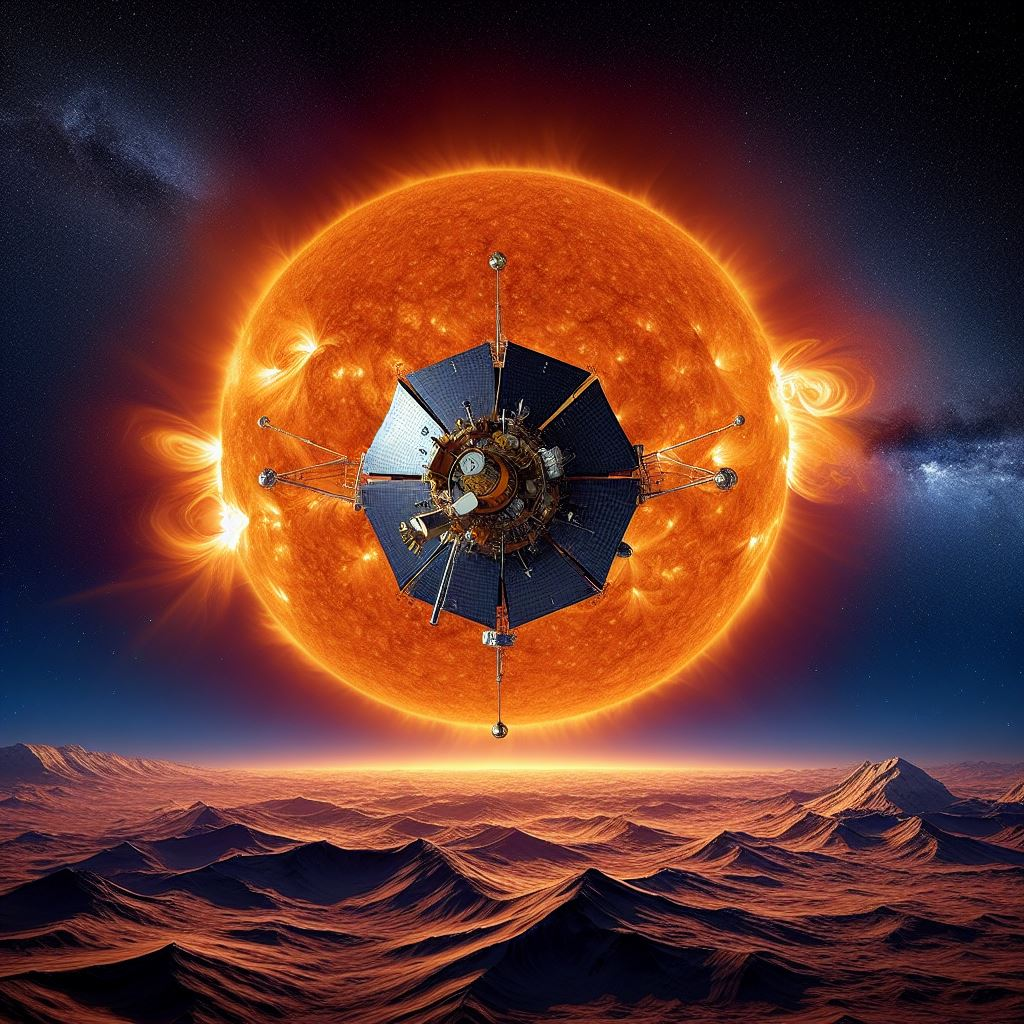NASA’s Parker Solar Probe is gearing up for an unprecedented close encounter with the Sun on December 24, a year from now.

NASA’s Parker Solar Probe is gearing up for an unprecedented close encounter with the Sun on December 24, a year from now. Racing at an astonishing speed of 195 km/s (435,000 mph), the probe will venture closer to our star than any human-made object before, approaching a mere 6.1 million km (3.8 million miles) from the Sun’s surface.
Described by Dr. Nour Raouafi, the Parker project scientist, as “almost landing on a star,” this mission is poised to be a monumental achievement for humanity, akin to the historic Moon landing in 1969. Launched in 2018, the Parker Solar Probe has set ambitious goals to make repeated and progressively closer passes of the Sun, with the upcoming maneuver bringing it to just 4% of the Sun-Earth distance, equivalent to 149 million km (93 million miles).
The upcoming feat is not without its challenges, as at perihelion, the probe’s closest point to the Sun, temperatures on the spacecraft’s front could soar to a scorching 1,400°C (2,552°F).
However, the Parker Solar Probe’s strategy involves swift in-and-out maneuvers, allowing it to make vital measurements of the solar environment using a suite of instruments shielded by a thick heat shield.
Researchers anticipate that the groundbreaking knowledge gained from this mission will contribute to a clearer understanding of the Sun’s outer atmosphere, known as the corona.
The corona presents a perplexing phenomenon of superheating, with temperatures exceeding a million degrees, in stark contrast to the Sun’s surface temperature of approximately 6,000°C (10,832°F). This mission aims to unravel the mysteries of the corona, shedding light on the mechanisms behind its counter-intuitive superheating.
The corona is also the region where charged particles, such as electrons, protons, and heavy ions, undergo acceleration into a supersonic wind moving at 400 km/s (1,000,000 mph). Scientists are yet to fully comprehend this acceleration process, but its understanding is crucial for improving forecasts of solar behavior and mitigating the impacts of “space weather” on Earth.
“Space weather” encompasses powerful eruptions of particles and magnetic fields from the Sun, posing threats to Earth’s communications and power grids. As humanity contemplates future crewed Moon missions and establishes a permanent lunar presence, insights from the Parker Solar Probe are becoming increasingly crucial in safeguarding astronauts and infrastructure.
Dr. Nicky Fox, head of science at NASA and former lead scientist on the Parker Solar Probe, highlighted the significance of the upcoming flyby on December 24. The prolonged duration of the probe’s presence in the corona during this pass is expected to provide invaluable data on solar wind patterns associated with heating.
“We don’t know what we’ll find, but we’ll be looking for waves in the solar wind associated with the heating,” Dr. Fox remarked. “I suspect we’ll sense lots of different types of waves, which would point to a mix of processes that people have been arguing over for years.”
The coming year marks the pinnacle of Parker’s mission, as it won’t be able to approach the Sun any closer beyond December. Despite the challenges, the probe’s historic journey promises to unlock new insights into the Sun’s mysteries, offering a glimpse into the heart of our solar system and advancing our understanding of the universe.